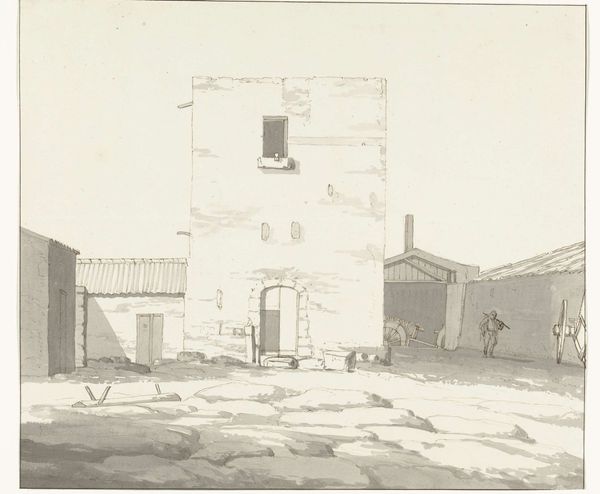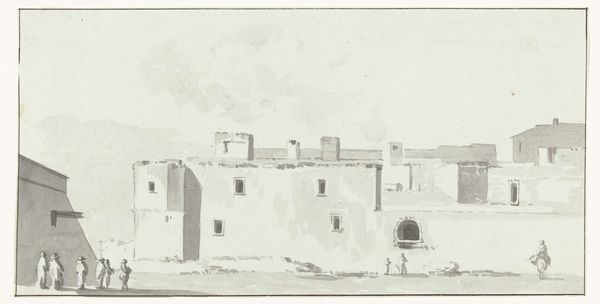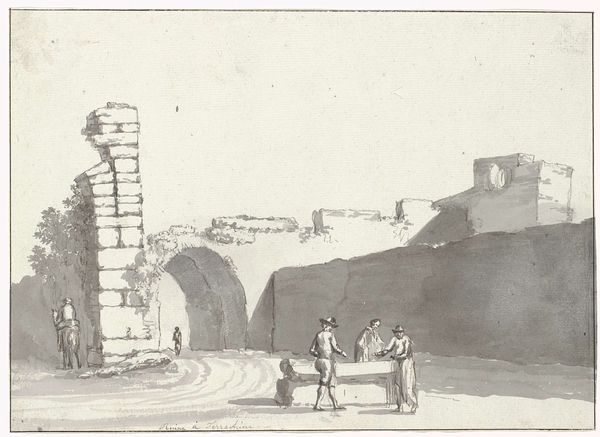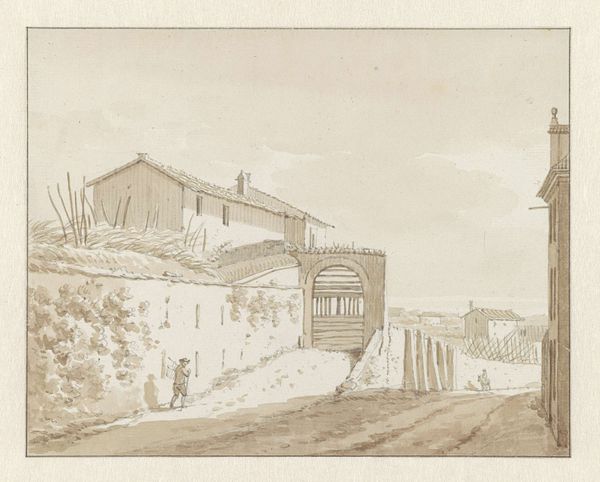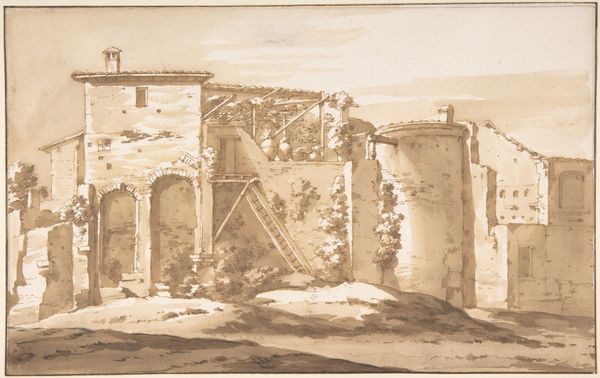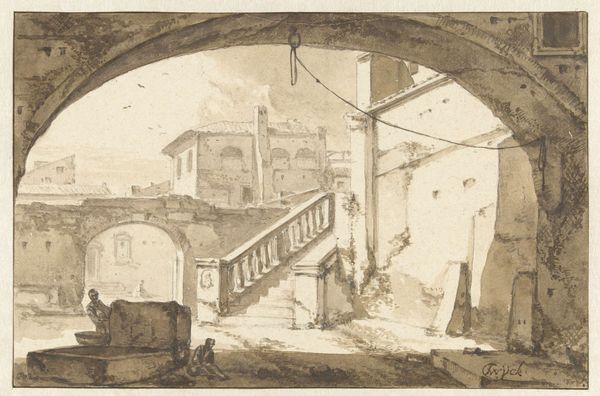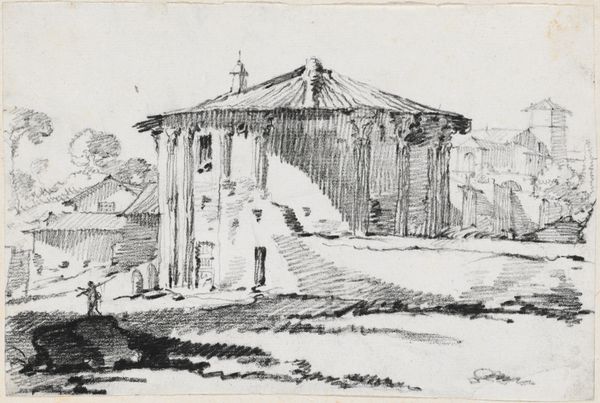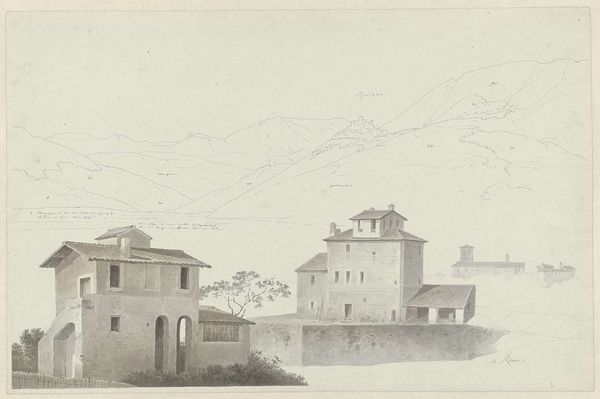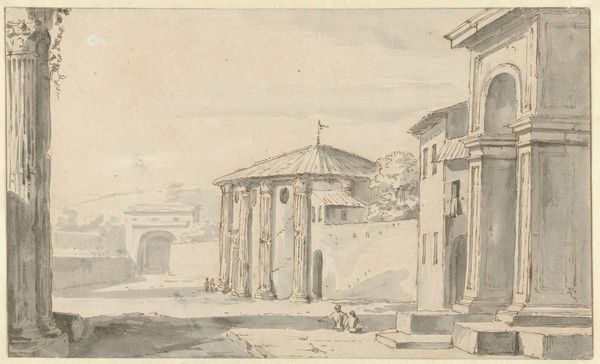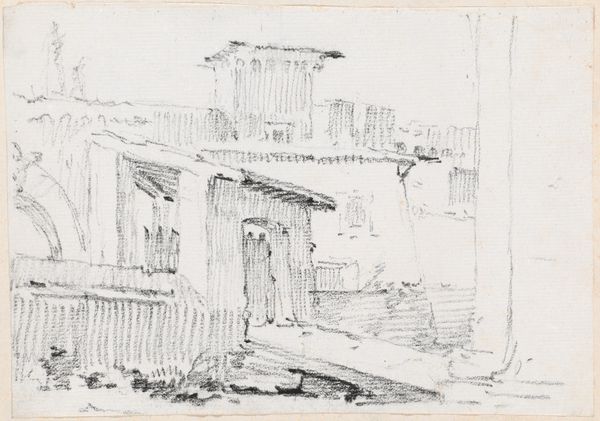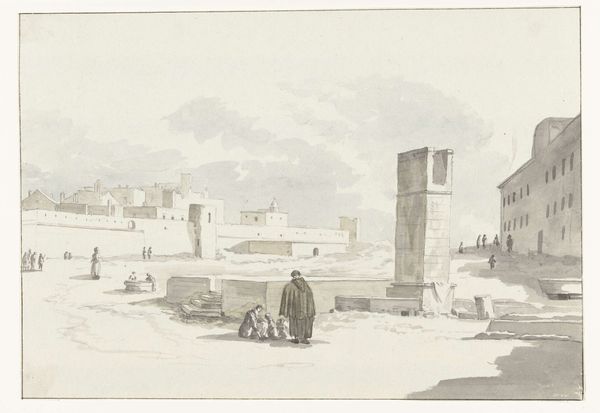
drawing, plein-air, paper, ink
#
drawing
#
neoclacissism
#
plein-air
#
pencil sketch
#
landscape
#
paper
#
ink
#
cityscape
Dimensions: height 185 mm, width 262 mm
Copyright: Rijks Museum: Open Domain
Curator: I’m immediately struck by how skeletal this cityscape feels, almost like an archaeological rendering. It’s like the bones of a place. Editor: That's an insightful way to put it. What you’re seeing is a drawing in ink and pencil by Louis Ducros, created en plein-air, meaning in the open air, in 1778. It's called "Antique Column and Buildings in the Port of Brindisi," now residing at the Rijksmuseum. Curator: Brindisi...it evokes the very tail end of the Appian Way, doesn’t it? Gateway to the East, or at least, to that historical memory of it. And the way he’s isolated that lone column fragment…is that meant to symbolize something grand fallen into disrepair? A commentary, perhaps, on the fleeting nature of empires? Editor: The isolated column absolutely speaks to a specific ethos. Neoclassicism often used ruins like these as a memento mori, but also as a nod to an idealised past, reimagined. The classical column becomes a potent emblem: order rising above decay, informing new civic identities in revolutionary times. Think of all the column symbols adopted during the French revolution. Curator: That interplay between decay and idealized forms fascinates me. It is a constant theme isn't it. How Ducros captures the textures is striking; you can practically feel the roughness of the aged stone contrasted against the almost dreamlike clarity of the light. He lets the viewer breathe within that captured light. Editor: Precisely! He’s very attuned to light and shadow, and that contrast is a hallmark of plein-air work. Also note that in the 1770's travel was difficult, dangerous even, and fraught with unknowns. A humble sheet of paper can quickly becomes an immersive stage that ignites collective cultural memories about Italy, about its past, and about what 'progress' actually means when the shadows start lengthening, right? Curator: Absolutely. A vital, visually austere reminder that what we build today will eventually become someone else's evocative fragment. The drawing really leaves you pondering the layers of history. Editor: Indeed, and considering the enduring allure of antiquity, Ducros's sketch captures both a specific place and an ongoing dialogue between past and present that art always seeks to resurrect.
Comments
No comments
Be the first to comment and join the conversation on the ultimate creative platform.
